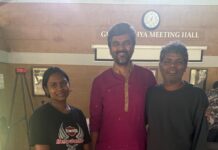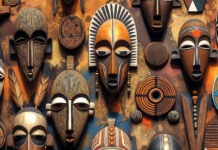
Greetings Sir!
I have a doubt lingering in me for a long time. I didn’t get any answer to it in any of my quests. I am sure, only you would be able to clarify. Hence this e-mail.
Who were the ones who, in independent India, brought caste under a structured system, saying that this caste belongs to this category? When did it happen? How many people were part of that system? How did they know all these statistical details? For example, who classified that Saiva Vellalars are OC, Veerakodi Vellalars are BC, and Isai Vellalars are MBC? There are many subdivisions within each caste like this. Who classified all these? How did they do it? Are their classifications accurate?
Are there any plans in our political system on how to change the existing caste-based classifications?
If such plans exist, why are there still questions about caste-based votes in party forms? How do you view the practice of selecting candidates based on caste? Do you really see any possibilities of India or Tamil Nadu moving away from caste? Is there a chance for this situation to change?
Please clarify.
Regards
S. Rajamanikam
Dear Rajamanikam,
I would like to answer this in detail. Already a lot of what I have said about this has been published as books.They can easily be purchased and read.
However, I will briefly summarize what has been said earlier. For more details, you may refer to the book.
At the outset, it is important to have some basic understanding about the caste system.
Caste is not created by anyone. It is a system that has emerged with the evolution of societies
The tendency to divide people based on birth and rank them hierarchically is a characteristic of feudal societies. It was essential for the production system of that society. There was no society in the world without such a tendency. Therefore, a system like caste existed in every country, and it continues to persist in different forms.
Castes were originally tribal ethnic groups. When tribal groups merged into a society, those ethnic groups became castes within that society. The dominant castes rose to the top, while smaller castes fell to lower positions.
The Indian caste system has never been unchanging. Lower castes have risen to power, formed ruling dynasties, and become aristocrats, while ruling castes have been subjugated and turned into lower castes.
Based on these, below is the answer for your query.
When Britishers came to India, they tried to understand and comprehend the caste system prevalent here. It was necessary for administration purposes.
Initially European missionaries analyzed the caste system and brought out preliminary records. Later when the British rulers wrote manuals to aid administration, they recorded the castes.
J H Nelson’s ‘Madura country manual’ is an example. (It is available online as an e-book) He has given elaborate notes about the castes in it. However, those were written by inquiring about the castes, their subdivisions, and their characteristics from those who worked in the British administration.
Subsequently, sociological researchers recorded information about the castes. Edgar Thurston extensively documented the castes of South India. His monumental seven-volume work ‘Castes and Tribes of Southern India’ is a vast compilation of records (co-authored with K. Rangachari). This book was published in 1909 and remains a valuable reference even today. It is available online as an e-book.
Subsequently, the British conducted a census in India, and the first caste-wise census took place in 1881. It was during this census that it was categorically recorded that one caste was inferior to another. Before this, if a caste moved to another village and engaged in a different occupation, its status could change. There is ample data to support this.
For example, when the Chola dynasty declined, the warrior castes migrated to Chera kingdom and took up weaving. They were known as Kaikola Mudaliyars. This has been recorded by A.K. Perumal. Many castes have changed their status in this way. After the British census, such changes became impossible.
In the British census, each caste was recorded based on their own declarations about their place and characteristics. In the 1911 census, many castes across India collectively registered under a single name. Announcements were made that castes should register under one name. This was because, at that time, the significance of numbers in democracy was beginning to be recognized. Such unification helped them gain power.
When a caste identifies itself in a certain way, other castes often oppose it. Even today, when the Devendrakula Vellalars refer to themselves in that manner, other Vellalars oppose it. Similarly, when some castes claimed to be Kshatriyas, other castes contested that identity. This conflict has persisted for many years.
The British administrators determined the characteristics and locations of castes based on the information collected from the three censuses they conducted. The social status and economics of the castes were taken into consideration, as were their demands. Initially, all castes wanted to identify themselves as upper castes. However, after the introduction of caste-based reservations in 1921, all castes preferred to identify themselves as backward castes.
After India’s independence, many castes were declared as backward castes. This was an identity gained politically to secure reservations. Today, the Devendrakula Vellalars state that they do not want reservations and that they are not oppressed. In any case, within twenty years, they will likely move away from that identity.
Thus, the identities of castes have been recorded and structured over the past two hundred years.
*
Castes today are not rigid social structures in India as they were in the past. However, they have transformed into collective identities. They help people organize themselves into large social groups and gain political and economic power. The social rigidity of caste has diminished, but the political significance of caste is growing stronger.
As a result of this, blame-based politics has emerged. It’s a peculiar double standard. On one side, people organize themselves based on caste, act according to caste, and take pride in their caste. On the other side, they criticize Brahmins and Hinduism for teaching caste. In other words, there’s a mindset of accepting all the beneficial aspects of caste, while holding others responsible for its negative aspects. This is the underlying nature of all caste-related discussions here.
In a democracy, it is natural for people to somehow gather together and strive to gain power. A trade union is one such collective. Similarly, caste has also become such a collective. Even in countries with more advanced democracies than ours, like the United States and in Europe, people engage in power politics by organizing themselves into groups based on birth, economics, and other factors. The groups that succeed in economics and power tend to dominate.
We cannot say whether this is right or wrong. We can only say that history unfolds in this manner. When we state that democracy itself is a competition for power, this is also true. As long as conflicts do not arise within castes and people do not demean one another based on caste, we must consider that there is no alternative.
Jeyamohan
————————————————–
Translated by Geethaa Senthilkumar
(Original article)
சாதிகள் வரையறை செய்யப்பட்ட வரலாறு











